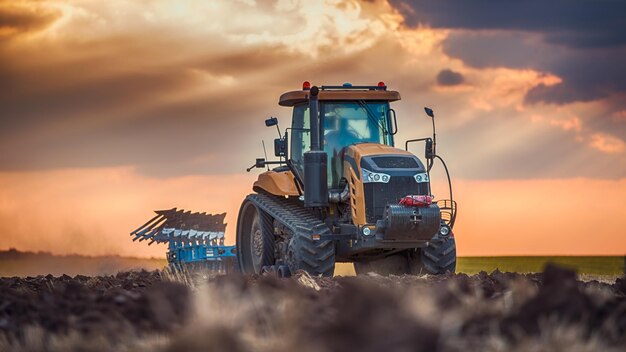Modern farming relies heavily on tractors to increase efficiency and productivity. Plowing and seedbed preparation are two critical tasks where a tractor can save time, reduce labor, and improve yields. Here’s a detailed guide on how to use a tractor effectively for these tasks, ensuring the best results for your farm.
1. Understand the Importance of Plowing and Seedbed Preparation
Plowing breaks up the soil, allowing for better aeration and water penetration. It also helps to eliminate weeds and incorporate organic matter into the soil. Seedbed preparation ensures that the soil is fine and level, creating an ideal environment for seed germination and growth.
2. Choose the Right Tractor and Implements
Select a tractor with sufficient horsepower to handle the size and type of land you’re working on. The following implements are commonly used for plowing and seedbed preparation:
- Plows: Moldboard plows, disc plows, or chisel plows, depending on soil type and crop requirements.
- Harrow: Used after plowing to break clumps and level the soil.
- Rotavators: Ideal for fine-tuning the seedbed after harrowing.
3. Inspect and Prepare the Tractor
Before starting, check the tractor for maintenance issues.
- Ensure tires are properly inflated.
- Check oil, fuel, and hydraulic fluid levels.
- Inspect the implement’s connections, ensuring they are secure.
4. Adjust the Plow for Optimal Performance
Proper plow adjustment ensures uniform soil turnover and prevents unnecessary strain on the tractor. Adjust the following:
- Depth control: Set the plow to the desired depth, usually between 15-25 cm for most crops.
- Tilt angle: Ensure the plow is level for even soil turning.
- Spacing: Position the furrows to avoid overlaps or gaps.
5. Start Plowing
Begin at one end of the field and drive in a straight line, ensuring consistent furrow depth.
- Engage the tractor’s low gear for steady speed and precise control.
- Turn the soil completely to bury crop residues and weeds.
- Use GPS or markers to maintain straight furrows, especially on large fields.
6. Follow Up with Harrowing
Once plowing is complete, harrow the field to break down large clumps of soil and level the surface.
- Use a disc or tine harrow, depending on the soil condition.
- Adjust the harrow depth to ensure thorough mixing and breaking of clods.
7. Fine-Tune with a Rotavator
For crops requiring a fine seedbed, use a rotavator after harrowing. This implement pulverizes the soil further, creating a smooth and uniform seedbed.
- Operate the rotavator at moderate speed to avoid overworking the soil.
8. Prepare for Planting
After seedbed preparation, mark rows or beds for planting. Use a seed drill or planter attachment for precision planting, ensuring seeds are sown at the right depth and spacing.
9. Maintain Your Equipment
After use, clean the tractor and implements to remove soil and debris. Regular maintenance prolongs the life of your equipment and ensures efficiency.
- Lubricate moving parts.
- Inspect for wear and tear.
- Store implements in a dry, sheltered area to prevent rust.
10. Prioritize Safety
Always follow safety protocols when operating a tractor.
- Wear protective gear.
- Avoid overloading the tractor.
- Ensure no one is in the field when operating heavy machinery.
Using a tractor for plowing and seedbed preparation is a cornerstone of efficient farming. By selecting the right equipment, maintaining proper adjustments, and following best practices, you can prepare your fields effectively for planting. A well-prepared seedbed promotes better germination, healthier crops, and higher yields, ensuring long-term farming success.







